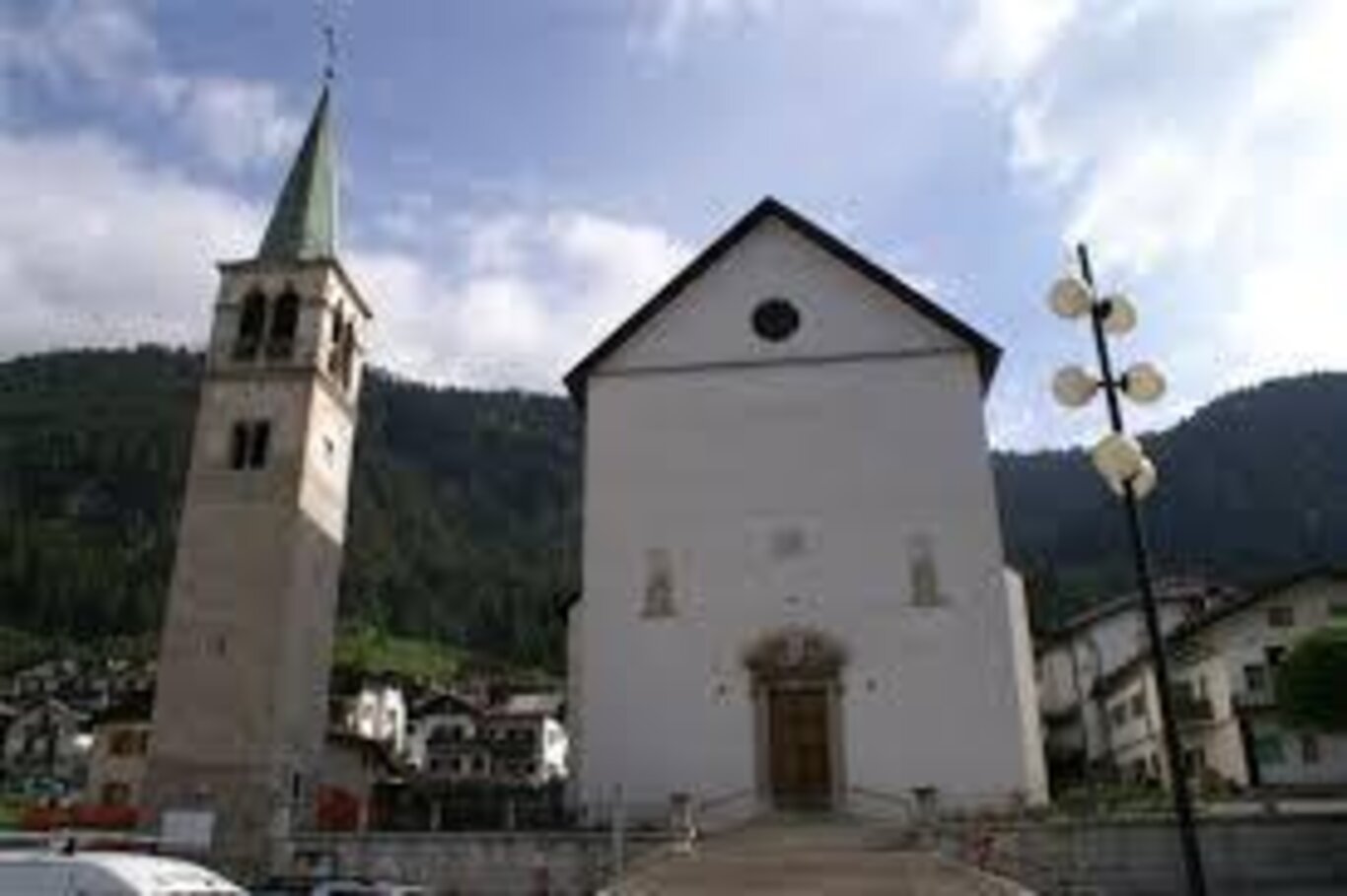To the left of the present bell tower, at least two churches have stood over the centuries. The first, very modest, dates back to 1100; the second, in late Gothic style and similar to the church of St. Lucan, dates back to the 15th century. The bell tower was built in 1436 by Gregory of Lienz and leaned against the apse. The base of the present construction may be the original one. Inside the church were four altars with their painted altarpieces; the valuable sacred furnishings were also lost due to Napoleonic requisitions. In 1737, the bell tower was raised to a design by Belluno architect Della Rosa. In 1760, it was decided to demolish the old church, which had perhaps become insufficient and disproportionate to the bell tower. From the various projects, the architects Angelo and Felice Del Fabbro and Domenico Schiavi, all from Tolmezzo, were chosen. The construction work lasted seven years and an oven was opened on site to produce the 'shingles' for the roof covering.
The first impression, looking at it from the outside, is that of a bare and inelegant building, but once through the portal, one is confronted with a vast nave lit by large windows set above a complex cornice. There are numerous frescoes on both the ceiling of the nave and the apse. The latter are by the painter Giovanni De Min in 1855, the year when cholera raged in Auronzo. There are seven marble altars. The raised presbytery highlights the high altar, by Giovanni Mattiussi from Udine, surrounded by two imposing oil paintings by De Min: The Desecration of the Temple, from 1834, and The Resurrection of Lazarus, from 1827. The latter was exhibited at the Academy of Fine Arts in Venice and was considered by President Leopoldo Cicognara to be 'the most beautiful painting that Italian painting has produced after three centuries'. Equally rich and precious were the sacred furnishings, despite the French requisitions of 1797 that stripped Auronzo's churches of no less than 4,500 kilograms of silver. The remarkable organ above the portal is worth mentioning. It was built in 1780 by Gaetano Callido and enlarged in 1864 by Giovanni Battista De Lorenzi.
